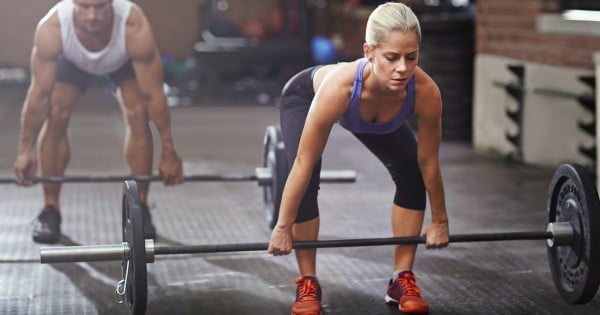
By Jason Bennie, Victoria University; Stuart Biddle, Victoria University, and Zeljko Pedisic, Victoria University
Regular participation in muscle strengthening activity such as weight or resistance training has many health benefits. However, this mode of exercise has been largely overlooked in Australian health promotion. Our recent research shows a large majority of Australians do not engage in muscle strengthening activity.
Muscle strengthening activity usually includes exercise using weight machines, exercise bands, hand-held weights, or own body weight (such as push-ups or sit-ups). When performed regularly, muscle strengthening activity leads to the improvement or maintenance of strength, size, power and endurance of skeletal muscles.
Watch The Bachelor’s Sam Woods easy body weight workout you can do anywhere. (Post continues after video.)
Historically, most public health physical activity recommendations have predominantly promoted moderate to vigorous intensity aerobic physical activity (such as brisk walking or jogging). However, the current Australian guidelines issued in 2014 are our first national public health guidelines to additionally recommend muscle strengthening activity.
They recommend an adult “do muscle strengthening activities on at least two days each week”.
Top Comments
I LOVE lifting!
I'm in the best shape of my life, at age 36.
The bonus is, if you superset, you also get a great cardio workout.
Winning!
Snap... I'm 36 too, after having my second baby I was 1.71cm and 82 kg and feeling fat, tired and grumpy. I lost 15kg doing lots of cardio, but lifting has changed the shape of my body and the best part is muscle burns more calories, so I can now stay 67kg but actually eat!!!!!
"...weight training has greater benefits for bone/joint health, the ability
to perform activities of daily living (general mobility, getting into
and out of a chair, bathing, dressing)"
Have YOU ever tried getting in and out of a chair after leg day?! or worse.. TWO days after leg day... TORTURE!!!
This made me laugh!!!!! So true, day two is a killer!!!!